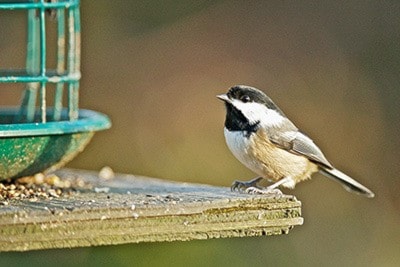Remembrance Day is always a somber occasion and this year’s gathering at the Forest Grove Legion was no exception.
A good crowd gathered in the Legion and at 10:45 a.m. everyone assembled outside to parade to the Cenotaph at the back yard of the legion lead by two RCMP officers resplendent in their red serge.
Young cadets were on hand to assist in the laying of 16 wreaths and observe the day.
There were a few speeches and representatives from the Canim Lake First Nations performed a drumming tribute as the service went on.
At the conclusion of the service children were invited to place poppies on the Cenotaph and then everyone went inside to share a nice lunch made and served by the Ladies Auxiliary.
Feathered friends
With the days getting colder, the snow starting to fall and all the spring and summer birds have gone it won’t be long until we start to see the arrival of our fall and winter birds.
This year the ground has been covered by early snow so these little guys are going to have to work hard to scrape up enough food every day.
Before you put your feeders out clean them by rinsing them in a very dilute solution of bleach and water to guard against infection and cross contamination then fill them with seeds or suet and enjoy the winter guests.
Whiskey jacks, also known as camp robbers or American gray jays, are very social and will be attracted by just about any kind of table scraps, meat or suet and if you’re lucky they will light on you to get their treat.
The cheeky Stellar’s jay, which is a beautiful deep blue, can also be found eating the same kind of food as the whiskey jack. Suet and black oil sunflower seeds are a popular food with most of our winter birds and can be purchased at any pet food or grocery store.
Winter birds need high energy food to get them through the long, cold winter months.
The black-capped and mountain chickadee are two of the regular visitors to the feeders and these tiny birds are easily recognizable by their sweet little calls.
Woodpeckers are easily identifiable by their call and flight style and will eat suet but will also move up and down trees looking for insects in the bark.
The hairy, downy, red-headed and pileated woodpecker are just a few of the woodpeckers we have here in the Cariboo.
Flickers and yellow-bellied sap-suckers are members of the woodpecker family and can also be seen at the winter feeders. Nuthatches and brown creepers will gladly steal seeds to stow away in the bark of trees.
Evening and pine grosbeaks will arrive later in the winter and they busy themselves eating seeds out of cones of trees but will devour a tray of sunflower seeds very quickly.
If your feeders are close to your house make sure you put bits of paper on your windows so that the birds don’t fly into them.
For some reason grosbeaks seem to have a harder time recognizing this hazard. Watching birds come to the feeder is a pass time enjoyed by many so keep the feeders full and your bird book by the window to see how many birds you can identify this winter.
The days start getting longer in a month and the Hummingbirds will be back before we know it.
